Dec 4, 2023
Dove: A Spotless Approach to Digital Marketing
What comes to mind when you think about a soap brand? It’s probably not words like 'avant-garde', 'ahead of its time', and 'disruptor'. But Dove has completely reversed our impression of how a common household product can be branded and advertised.
Launched in 1957, the brand was originally positioned as a functional soap brand. However, Dove's digital marketing campaigns have established the company as a powerful game-changer in the beauty industry.
Dove has expanded its product range to include shampoos, conditioners, body washes, moisturizers, deodorants, facial skincare, and self-tanning products along with a line aimed at the male beauty and skincare market. In 2023, the brand was valued at approximately $6.5billion according to Statista and its digital campaigns have won prestigious awards.
10 Tips to Kickstart your Digital Marketing Career
Always innovative and courageous, Dove sells more than beauty - it invites its customers and fans to reflect on self-esteem and self-acceptance. This concept might seem to be a direct contradiction, given that the majority of beauty-based advertising is about fixing or hiding personal imperfections. However, Dove makes it work and digital is at the core of everything the brand does.
- Dove's Creative Marketing Techniques
- Does Dove Always Get it Right?
- Where Dove Succeeds
- The Future of Dove
Dove’s Creative Marketing Techniques
Let’s look at some of the key creative innovations Dove has brought to its marketing, many of which have had ripple effects through various sectors.
1. Building strong communities & starting difficult conversations
As early as 2004, Dove began to emerge as a true revolutionary in its category by pioneering the concept of Real Beauty. Now a commonly used hashtag, this concept of showcasing women in a more realistic light - without professional make-up and lighting -was quite revolutionary for the time.
The first stage of the campaign featured a series of billboard advertisements in the US showcasing photographs of regular women in place of professional models with a cheeky question inviting the audience to comment. People passing on the street could vote on whether they were “Fat or Fab” or “Wrinkled or Wonderful” and the voting results were displayed on the billboard itself. At a time when rival brands had yet to grasp the importance of digital activation, Dove used provocative, stand-out creative which quickly caught the attention of the public and its target audience.
As a result of the Real Beauty campaign, sales for Dove jumped from $2.5 to $4 billion in the campaign’s first ten years. Dove bars became the number one preferred soap brand in the U.S. and Unilever’s bestselling product company-wide.
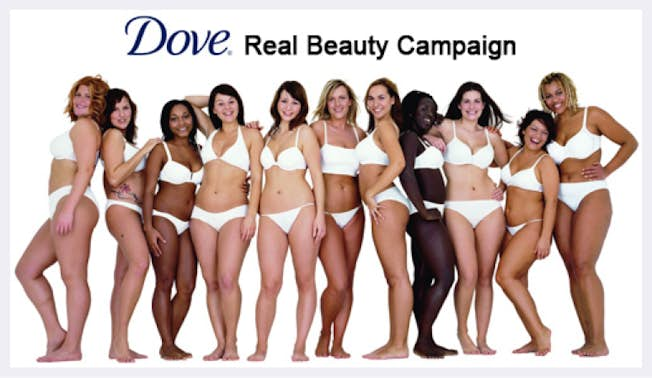
The brand launched the Dove Self Esteem Project in 2006, an educational web portal set up to help improve young people’s self-esteem through online articles, videos forums, and workshops on topics like self-esteem, body positivity, and bullying. Again, this was a first for the industry and a clever activation technique, illustrating Dove’s ability to pivot to video content in response to its growing consumption trend among this age group.
This project has evolved to tackle key issues head-on that matter to its community and audience. Never afraid to take risks, Dove's 2023 campaign is a short film (that went viral on social media) 'Cost of Beauty' to address the rise in youth mental health issues linked to social media. (Be aware the contents of the video contain sensitive content about body appearance)
"While certain aspects of social media can promote creativity and connection for young people, data has shown toxic content online is harming the mental health of today's youth. If there isn't real change, young people will continue to pay with their wellbeing." explains Alessandro Manfredi, Chief Marketing Officer for Dove. "We have a responsibility to act and support a safer environment on social media, helping protect young people's mental health. This means going beyond individual interventions to drive systemic change."
2. A strong emotional connection with their customer
Dove demonstrates an acute understanding of customer insights in every iteration of its messaging. Digital marketing campaigns are clever, insightful and ground-breaking, such as their 2015 #SpeakBeautiful campaign, where they partnered with Twitter to help counteract negative tweets about body image and to also respond to these tweets in real-time. To launch the campaign, Twitter and Dove teamed up to create a video ad about body shaming which aired during the 2015 Oscars pre-show.
Throughout 2015, women used #SpeakBeautiful more than 168,000 times and drove 800 million social media impressions of the campaign.

For their 2017 ‘Real Women’ photo campaign, they worked with award-winning photographers to take photos of ‘real women’, specifically highlighting their determination, grit and talent. Partnering with Shutterstock, these photos were tagged as #beautiful and uploaded to the content center so that subsequent searches would yield these photos in the results. Dove then encouraged other photographers and brands to join the cause: a clever move to recruit positive advocates for its #realbeauty message.
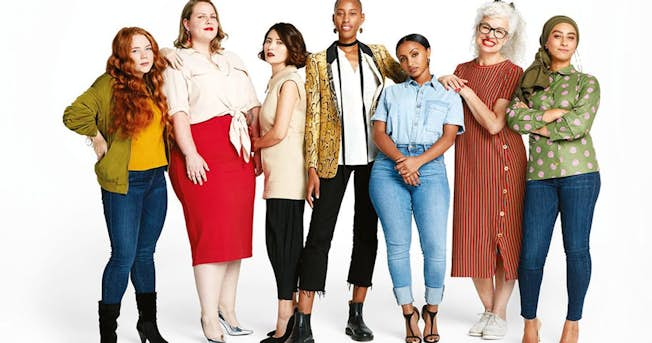
3. Interpretations of Beauty
The proliferation of social media and the increased emphasis on body perfection - particularly amongst 16 to 25 year-old females – led to Dove’s 2018 ‘No distortion’ campaign. A push-back against the editing of women’s bodies for print/online purposes, Dove introduced its “No Digital Distortion” mark, a symbol to confirm that a picture had not been digitally altered. This was a clever move as the symbol appears on everything Dove produces: all their digital and print ads as well as branded / social media content. It’s a consistent reminder of Dove’s message across traditional and digital channels acting as a daily reinforcement of their commitment to #realbeauty.
Dove also went further to demonstrate their ethos in this area and signed a two-year global partnership with the Cartoon Network series “Steven Universe” to educate young people on body confidence as part of its Self-Esteem Project.
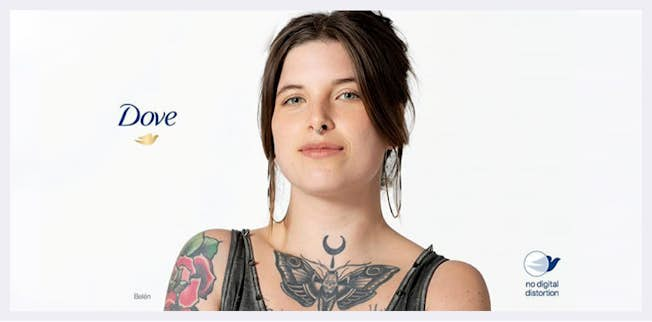
For their latest campaign, entitled #showus, Dove partnered with Getty Images to collect over 5,000 images submitted by women and non-binary individuals from a variety of underrepresented backgrounds. As with the 2017 Shutterstock campaign, they continue to invite media and advertisers to join the cause by using these photos and encouraging the representation of all kinds of individuals.
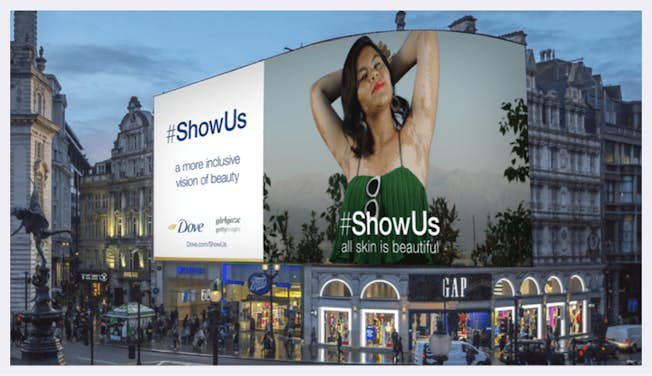
Does Dove Always Get it Right?
In a word – No.
In 2011, Dove had to apologize for an ad for its VisibleCare body wash as it seemed to show a black woman in the "before" photo and a white woman in the "after" photo with "more beautiful skin." And in 2012, Dove faced criticism for advertising its Summer Glow Lotion as being for "normal to dark skin."
Several years later, in 2015, Dove faced harsh criticism for an outdoor activation of their #ChooseBeautiful campaign, which didn’t go down as well as they thought it might. Women were invited to choose a doorway depending on how they felt about themselves. Critics considered this to be heavy-handed, unfair, and manipulative and there was considerable negative press about the use of this technique to supposedly build self-esteem.
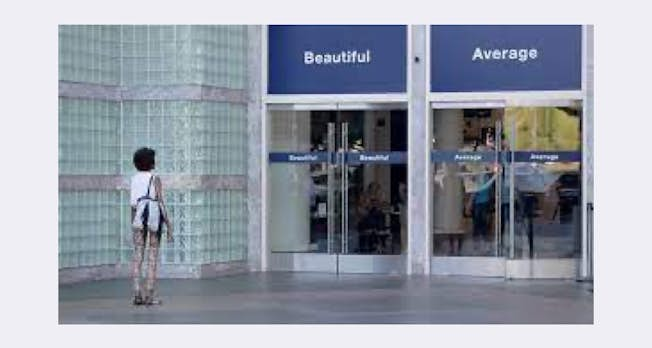
Dove faced even bigger, race-related backlash in 2017, with a short three-second Facebook video that seemingly featured a black women removing her t-shirt to reveal first a white woman and then a Southeast-Asian woman.

Dove reacted swiftly and posted a statement to explain what their intention had been with this ad, and to apologize. Their reaction was swift, but it didn’t elaborate sufficiently on the issues that were raised.
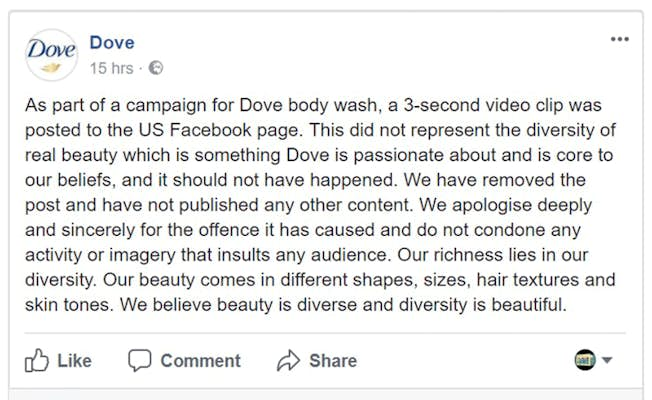
Where Dove Succeeds
They know their audience. Inside out.
Dove has spent time and money on ensuring they’re connecting with this audience, in the right way and at the right time. For example, in 2017 they commissioned the ‘Dove Global Girls Beauty and Confidence Report’ in order to better understand the challenges facing their younger female audience. It’s the largest academic report from Dove to examine the impact of body esteem, pressures, and confidence on girls globally.
Channel Integration
Their digital marketing campaigns are fully integrated with other channels such as paid advertising, print, TVC, social media, digital, outdoor advertising, real-life applications, and strong website content. All of this ensures they maintain a consistent and strong brand message as well as deepening brand associations with their chosen #realbeauty, #selfesteem, and #showus movements.
Involving Others
They encourage others to get involved, thus creating meaningful User Generated Content (UGC) for their social media channels. Inspired by the #SpeakBeautiful hashtag, women have created Twitter accounts to spread positivity, highlight their triumphs, and even write #SpeakBeautiful essays and poetry. Celebrities including Arianna Huffington and Amy Poehler have also weighed in on the conversation sharing their own messages on beauty positivity.
They actually make a difference online
According to Twitter, the #SpeakBeautiful hashtag led to a huge change in the way women talk online, with negative tweets about beauty and body image sent by women dropping from over 5.3 million in 2014 to 3.4 million in 2015–a 36.8% decrease year over year.
Giving brand advocates freedom on social media
Dove recognizes that content creators are best placed to create content! The majority of its promotional product images on Instagram are repurposed or reposted influencer snaps. Instead of the often bland shot of a polished Influencer holding a product up to the camera, Dove choses to work with a range of influencers with varying skin types, body shapes, and cultural backgrounds, allowing them to choose how they want to profile Dove products. In other words, Dove is relying on the power of peer-to-peer recommendation instead of pushing unattainable beauty ideals to the ever-impressionable social media masses.
For example, they regularly run targeted social media takeovers that feature their brand partners, such as having body-positive influencer Gabi Fresh take over their Instagram Stories with a Q&A and her own engaging video content. Tapping into the Influencer community like this further helps Dove to communicate their brand messages in a meaningful and authentic way.
Surprise Strategic Partnerships
Working with Twitter (now X) in 2015 it was an unexpected move and one which paid off in terms of talkability and branding. Likewise, the Shutterstock and Getty collaborations showed incredible foresight - by teaming up with creative origins of beauty campaigns, Dove was helping to effect change in global advertising, not just in their ads.
Influence on sister brands
Dove’s parent company, the global consumer goods giant Unilever (active in over 190 countries with over 400 diverse brands) has clearly applied some of their successful digital-based ideas on perception into their other beauty brands. For example, in 2014, Simple Skincare invested £7m in a new campaign called ‘City Living’, which was designed to educate consumers about the effect city living can have on their skin. This was a multi-media campaign using social media as well as TV and billboard advertising. They also set up a ‘Simple Advisory Board’ working with leading dieticians and fitness experts to push a healthier attitude to skincare’.
Ahead of their competitors
In 2004, no other brands were really talking about these types of issues. Especially not beauty brands. Dove was a pioneer, and that gave them a certain ‘headstart’ in terms of cause-based marketing messages. By now we have seen many such movements online e.g. #bekind #dresslikeawoman, #heforshe etc. Brands have increasingly aligned themselves to global movements and causes but Dove has benefitted from over 15 years of consistent messaging and so its brand equity is firmly rooted in empowering women via #realbeauty.
The Future of Dove
With over 15 years focusing on real beauty as their core brand messaging, and a demonstrated commitment to highlighting inclusivity and equality in their advertising, the new direction Dove have recently taken is another industry first. An extension of ‘#showus, the latest campaign called ‘It’s On Us’ shows how Dove's marketing around beauty continues to evolve.
Based on the fact that 70% of women don't feel represented in media and advertising*, Dove has stated that its mission is to change the way media cast and feature models for beauty campaigns, starting with a rallying call for international casting calls to use the real beauty models from their #ShowUs Project. They’ve empowered these models by subsidizing the process i.e. if another brand chooses to use one of them, Dove will cover the cost of their appearance fees. Furthermore, in January 2020, Unilever pledged to feature more diverse groups in its advertising and also behind the scenes with any agencies and producers it works with in campaign production.
A beauty brand offering to reduce costs for other, competitive beauty brands in order to galvanize and disrupt the industry in which they operate? Will it pay off? And will the consumer reward these mammoth efforts to champion #realbeauty? Time will tell but it will certainly provide other brands, and digital marketing strategists with plenty of inspiration on how to build a brand online.
Like to learn more about digital marketing strategy in all its forms? Advance your knowledge and career with an in-demand MSc Masters in Digital Marketing. Gain advanced skills, learn specialist strategies and hone your critical thinking with the DMI’s global standard in digital marketing education.
Related
Upgrade to Power Membership to continue
your access to thousands of articles, toolkits, podcasts, lessons and much much more.
Become a Power Member- Login
- View Courses
- - - -
- Courses
- Resources
- - - -
- My Account
- Change Password
- Logout





